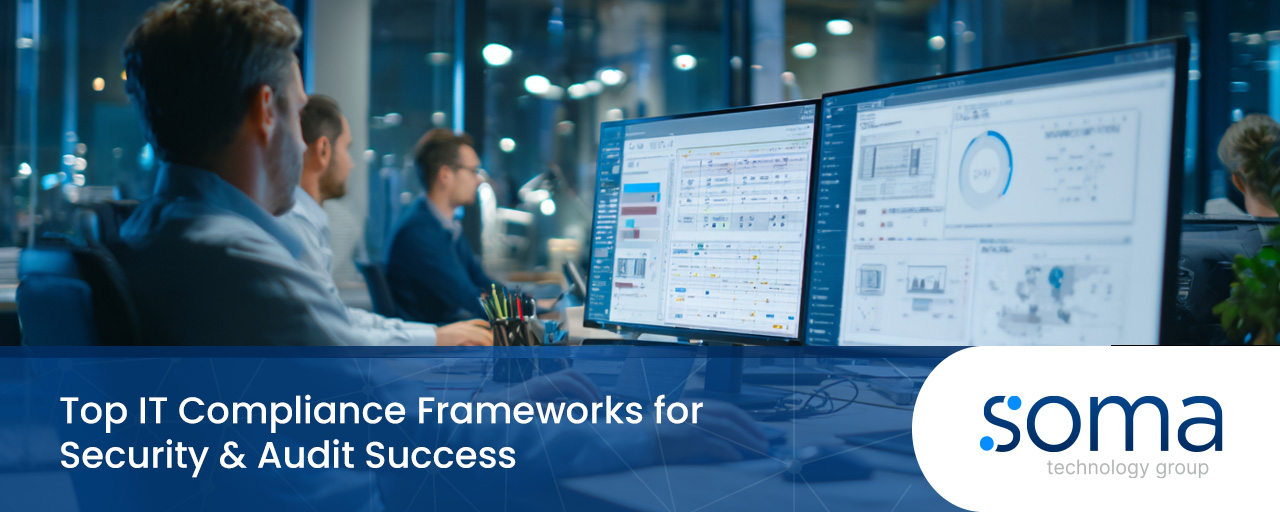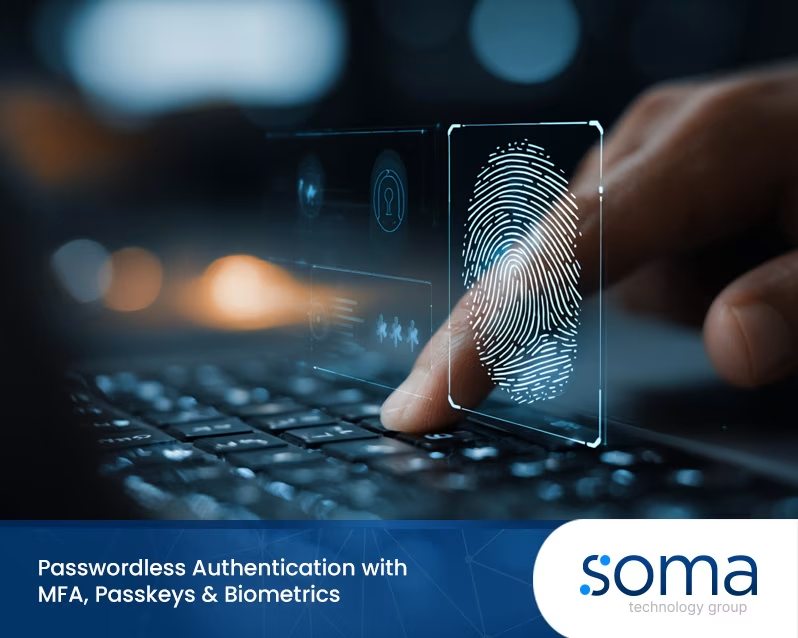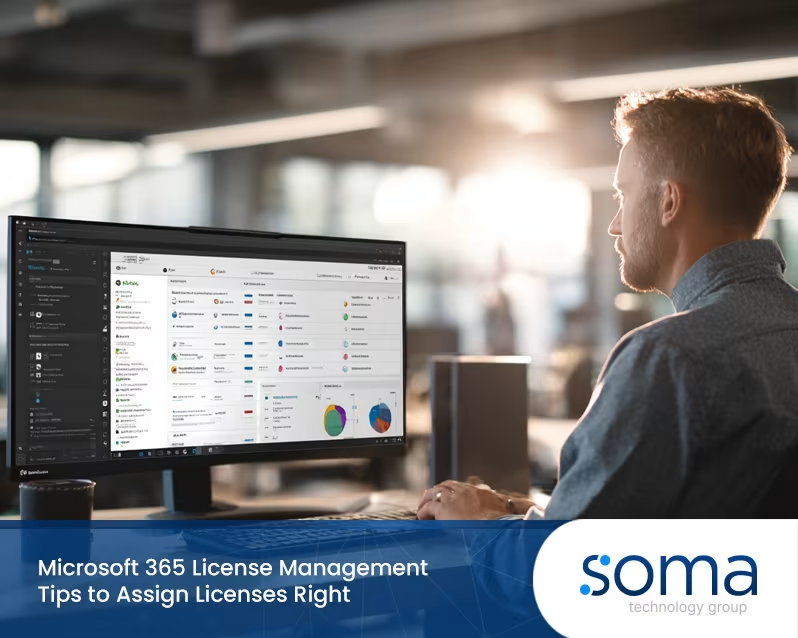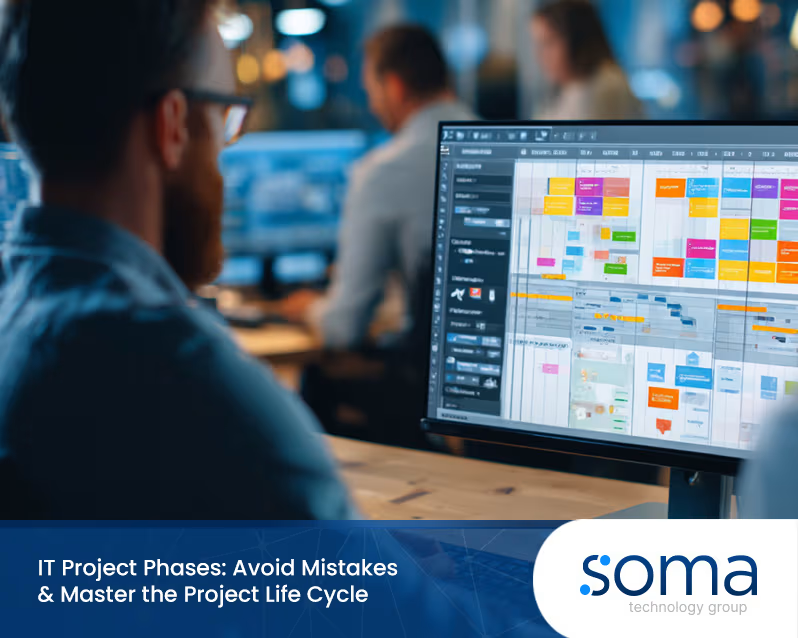
Top IT Compliance Frameworks for Security & Audit Success
Meeting regulatory requirements isn’t optional—it’s essential for protecting your business, especially when dealing with sensitive data or operating in regulated industries. IT compliance frameworks give you a structured way to manage risks, improve your security posture, and demonstrate accountability. In this blog, you’ll learn what these frameworks are, why they matter, and how to implement them effectively.
We’ll also cover the role of audits, the importance of ISO 27001, and how SMBs can meet compliance without overcomplicating their operations. These frameworks are designed to help organisations align with security and privacy standards, reduce cybersecurity risk, and maintain compliance with national and international regulations.
What are IT compliance frameworks?
IT compliance frameworks are structured sets of guidelines and practices that help organisations meet legal, regulatory, and industry-specific requirements. These frameworks provide a clear path for managing information security, reducing risks, and ensuring data protection.
They’re especially useful for businesses that handle customer data, operate in regulated sectors, or want to improve their overall security framework. By following a recognised compliance framework, you can show that your business takes security seriously and is prepared for audits or regulatory reviews.
Some of the most well-known frameworks include ISO 27001, NIST CSF, and HIPAA compliance. Each framework provides a different focus, but all are designed to help organisations improve their security posture and meet compliance requirements.

Common mistakes to avoid when implementing compliance frameworks
Implementing a compliance framework can be complex, especially if you’re doing it for the first time. Here are some of the most common mistakes businesses make—and how to avoid them.
Mistake #1: Choosing the wrong framework
Not all frameworks are created equal. Picking one that doesn’t align with your industry or business goals can lead to wasted time and resources. Make sure the framework fits your compliance requirements and risk profile.
Mistake #2: Ignoring internal processes
A framework is only effective if it’s integrated into your daily operations. Businesses often fail to align compliance with internal workflows, making it harder to maintain compliance long-term.
Mistake #3: Underestimating resource needs
Compliance isn’t a one-person job. It requires time, tools, and people. Many SMBs underestimate the effort involved, leading to incomplete or rushed implementations.
Mistake #4: Skipping regular audits
Audits are a key part of maintaining compliance. Skipping them or treating them as a one-time task can leave gaps in your security controls and expose you to risks.
Mistake #5: Not training staff
Employees are often the weakest link in security. Without proper training, even the best framework can fail. Make sure your team understands their role in maintaining compliance.
Mistake #6: Failing to document policies
Documentation is essential for both audits and internal clarity. Without clear records, it’s hard to prove compliance or identify areas for improvement.
Mistake #7: Overcomplicating the process
Trying to do too much at once can overwhelm your team. Start with the basics and build from there. A phased approach often works best.
Key benefits of using compliance frameworks
Using a recognised compliance framework offers several advantages:
- Helps identify and manage cybersecurity risks more effectively
- Improves your organisation’s overall security posture
- Makes it easier to pass audits and meet regulatory requirements
- Builds trust with clients and stakeholders
- Provides a clear structure for implementing security controls
- Reduces the risk of fines or legal issues from non-compliance

Why regulatory compliance matters for SMBs
For SMBs, regulatory compliance isn’t just about avoiding penalties—it’s about building a secure and trustworthy business. Clients, partners, and regulators expect you to protect sensitive data and follow industry standards.
SMB IT compliance also helps you compete with larger organisations. When you can demonstrate that you follow a recognised compliance framework, you’re more likely to win contracts, especially in sectors like healthcare, finance, or government.
Steps to implement a compliance framework successfully
Implementing a compliance framework takes planning and consistency. Here’s a step-by-step approach to get it right.
Step #1: Conduct a security assessment
Start by understanding your current security posture. Identify gaps, risks, and areas that need improvement. This will help you choose the right framework.
Step #2: Select the right framework
Choose a framework that aligns with your industry, size, and risk level. ISO 27001 is a good general option, while NIST CSF is ideal for critical infrastructure.
Step #3: Define roles and responsibilities
Assign clear roles for compliance tasks. This ensures accountability and makes it easier to track progress.
Step #4: Develop policies and procedures
Create documentation that outlines how your organisation will meet compliance requirements. This includes data handling, access control, and incident response.
Step #5: Train your team
Make sure all staff understand their responsibilities. Regular training helps prevent mistakes and improves overall awareness.
Step #6: Monitor and review regularly
Compliance isn’t a one-time task. Set up regular reviews and audits to ensure your framework stays effective and up to date.
Step #7: Engage external experts if needed
If you’re unsure where to start, consider working with a compliance consultant or IT provider. They can guide you through the process and help you avoid common pitfalls.

Best practices for maintaining compliance
Staying compliant requires ongoing effort. Here are some best practices to keep your framework effective:
- Schedule regular internal audits to catch issues early
- Keep documentation up to date and accessible
- Review and update policies as your business evolves
- Use automated tools to monitor compliance status
- Stay informed about changes in regulations
- Encourage a culture of security awareness across the organisation

How soma technology group can help with IT compliance frameworks
Are you a business with 20 or more employees looking to improve your compliance and security? If you’re growing and handling sensitive data, now’s the time to get serious about IT compliance frameworks.
At soma technology group, we help organisations implement, manage, and maintain the right compliance framework for their needs. Whether you need help with ISO 27001, NIST, or another standard, our team can guide you through every step. Contact us today to get started.
Frequently asked questions
What is the difference between a framework and a compliance framework?
A framework is a general structure or set of guidelines that helps you manage processes or systems. A compliance framework, on the other hand, is specifically designed to help organisations meet compliance requirements related to data security, privacy, and risk management.
Compliance frameworks like ISO 27001 or NIST CSF include detailed security controls and documentation standards. They help organisations align with regulatory requirements and improve their security posture.
How does a security framework support audits?
A security framework provides a structured way to prepare for and pass audits. It outlines the policies, procedures, and controls needed to demonstrate compliance.
By following a recognised security framework, your organisation can show auditors that you’ve taken the necessary steps to protect data and reduce cybersecurity risk. This makes the audit process smoother and more predictable.
Why is regulatory compliance important for SMBs?
Regulatory compliance helps SMBs avoid fines, protect customer data, and build trust with clients. It’s especially important for businesses in healthcare, finance, or government sectors.
Frameworks help SMBs meet compliance requirements by offering a clear path to follow. They’re designed to help organisations of all sizes reduce risk and maintain compliance over time.
What role does NIST play in IT compliance?
The National Institute of Standards and Technology (NIST) develops widely used frameworks like the NIST Cybersecurity Framework. These are designed to help organisations manage cybersecurity risks.
NIST frameworks provide detailed guidance on security controls, risk assessment, and incident response. They’re especially useful for organisations that need to meet federal information security standards.
How do security standards affect cloud security?
Security standards define how data should be protected, especially in cloud environments. They help ensure that cloud providers and users follow best practices for data security.
By aligning with recognised security standards, you can reduce security risks and maintain compliance in the cloud. This is essential for protecting sensitive information and meeting regulatory requirements.
What’s involved in implementing a compliance framework?
Implementing a compliance framework involves assessing your current security posture, selecting the right framework, and developing policies and procedures. It also includes staff training and regular audits.
Frameworks like ISO 27001 are designed to help organisations build a strong foundation for information security management. They provide a roadmap for meeting compliance requirements and improving long-term security.
.svg)
.webp)


